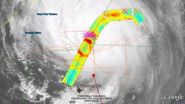Infantile spasms—known also as West syndrome and named after Dr. William James West who provided the first account of the disease in his 1841 medical article—is a rare epileptic disorder that typically presents in infants between 3 and 7 months of age.
Symptoms of IS include spasms of the limbs and trunk (extending or stiffening of the arms, legs, neck or trunk) that occur in clusters, an electroencephalography (EEG) pattern of hypsarrhythmia, and psychomotor delay or arrest.
The IS incidence ranges from 2 to 3.5 per 10,000 live births, occurring in more boys than girls (60:40). Approximately 90% of all IS cases occur during the first year of life, but can affect children up to the age of 4. While some cases have unknown cause (cryptogenic IS), many experts cite tuberous sclerosis (benign growth of brain tumors) and lack of oxygen to the baby at birth as common causes of symptomatic IS.
As part of their investigation, the ISWG (led by John Pellock, M.D.) examined scores of related studies and reviewed current clinical practice. The goal was to establish criteria that target early diagnosis, timely treatment options, and support IS patients and their families. Dr. Pellock, commenting on the agreed protocols, said "We strongly recommend broad clinical evaluation, including: detailed clinical neurophysiology; continued use of vigabatrin (VGB) or adrenocorticotropic hormone (ACTH) as first-line treatment to suppress clinical spasms and abolish hypsarrhythmic EEG; a timely assessment of treatment efficacy (regardless of chosen medication), with prompt therapy modification to avoid serious adverse events and with a particular goal of establishing an 'all-or-none' response where effective IS treatment should produce cessation of spasms and resolution of hypsarrhythmia on EEG."
To establish an IS diagnosis, a clinical evaluation is needed whereby doctors begin with a complete history and physical examination of the patient. Spasms observed by parents or physicians may vary from a cluster of as few as 2 to more than 100, lasting from less than 1 minute to more than 10 minutes. A full EEG evaluation is conducted to uncover any hypsarrhythmic pattern characterizing IS. Next, the etiologic diagnosis is made, aided by MRI, to understand the cause of the disorder. Such a diagnosis will aid in establishing the appropriate treatment strategy. "Following the completion of the history, physical, and neurological examinations, as well as EEG and MRI analysis, roughly 70% of patients will have an established diagnosis without the need for extensive metabolic testing" noted the ISWG team. "This saves valuable time to initiation of treatment and reduces evaluation costs."
There was consensus in the ISWG that use of ACTH is effective as first-line therapy for IS. However, the team believed there was insufficient evidence to define precisely the optimum ACTH dose and duration of treatment for IS; in general, short duration was preferred (i.e., approximately 2 weeks followed by taper). The ISWG also agreed on the efficacy of VGB as a first-line treatment option, with a dose of 50 mg/kg/day up to 100-150 mg/kg/ day in patients requiring escalation. Since prior studies have established a risk of visual field loss with VGB treatment, the ISWG suggested that infants who respond to this therapy may continue for 6-9 months, with continued ophthalmic evaluation.
Raili Riikonen, M.D., from Children's Hospital at the University of Kuopio in Finland, said in her commentary, "The goals of the ISWG are certainly worthwhile, but it should be appreciated that treatment approaches differ in Europe from the protocols described in this U.S. perspective." In Europe there are differing opinions on first-line treatment options for IS. After two weeks of VGB therapy, seizure freedom was seen in 26% of patients (Granström et al., 1999), 23% of patients (Elterman et al., 2000), and 54% of patients (Lux et al., 2004). In the first two of these studies, the number of IS patients who were seizure-free increased to roughly 65% after 3 months. "These data suggested the response with VGB comes later than with ACTH," Dr. Riikonen stated.
In Japan, treatment strategies for IS also differ from the recommended U.S. protocols. "The dosage of ACTH administered in Japan is strikingly different than prescribed amounts in the U.S.," commented Yukio Fukuyama, M.D., Ph.D., from the Child Neurology Institute in Tokyo, Japan in his commentary on the study by Pellock et al. A 6-month old infant with 8 kg body weight and 0.4 m2 body surface, would be administered a daily dose of ACTH of 60 IU/day (0.6 mg/day) in the U.S. versus 5 IU/day (0.05 mg/day) in Japan. The dosage difference between the U.S. and Japan is likely due to the different preparation forms (simple natural vs. prolonged synthetic). "Despite this large difference in dosage, the rate of seizure disappearance and EEG amelioration appears to be similar. Since the introduction of this low dosage scheme in Japan, it has been rare to observe serious side effects of ACTH (e.g., obesity, hypertension, hypertrichosis, electrolyte imbalance, manifest immunodepression, cardiac dilation, brain shrinkage on CT/MRI) in our daily practice," noted Dr. Fukuyama. VGB is currently not commercially available in Japan.
Oliver Dulac, M.D. and colleagues stated in their commentary, "Pellock et al. provide an excellent overview of IS in the form of a consensus report by a reliable panel of experts." This European team emphasized that IS is not a disease per se, but a common denominator of several conditions, mainly determined by etiology. Patients with different IS etiologies experience different disease courses, requiring different and specific treatment strategies and durations. Both Pellock et al. and Dulac et al. agree that length of IS therapy is one of the most challenging current questions in effectively and safely treating IS patients. VGB treatment, in particular, needs a balanced approach to curb retinal toxicity. "Patients with no cortical lesion (e.g. Down syndrome, leukodystrophy, or cryptogenic cases) usually require no chronic treatment following the control of spasms—ACTH treatment may be stopped after only one month, and VGB after 6 months," said Dr. Dulac.
While IS is a rare condition, the outcomes for patients with the disorder include higher mortality, ongoing development of additional seizure disorders as the patient matures, and often severe cognitive and developmental delay. A 2003 study by Hrachovy and Frost reviewed 67 published studies, with an average follow-up period of 31 months, and found only 16% of patients with IS had normal development. Additional studies indicated that severe learning difficulties may be present in 70% to 90% of IS patients. An IS study in an Atlanta birth cohort (1975�) found that 15% of patients died by age 11 and 35% died by age 25 (Trevathan et al., 1999).
"The establishment of an IS patient registry, and the development of a continuum of care for patients with this disorder are critical for improving outcomes," added Dr. Pellock. The ISWG suggested the need for a comprehensive approach for optimal management of children with IS, including access to and evaluation by a variety of professionals, including child neurologists, pediatricians, psychiatrists, rehabilitation services (physical, occupational and speech therapy), nurses, vocational rehabilitation counselors, neuropsychologists, social workers, and pharmacists. "Further studies are needed to determine ideal treatment strategies for IS; carefully controlled comparative studies or patient registries will allow a standard format for gathering important clinical data (e.g. IS recurrence rates, administered therapy details, developmental outcomes) from a large patient sample," concluded Dr. Pellock.
INFORMATION:
This study is published in Epilepsia. Media wishing to receive a PDF of the articles may contact healthnews@wiley.com.
Full Citations:
Article: "Historical Infantile spasms: A U.S. consensus report." John M. Pellock, Richard Hrachovy, Shlomo Shinnar, Tallie Z. Baram, David Bettis, Dennis J. Dlugos, William D. Gaillard, Patricia A. Gibson, Gregory L. Holmes, Douglas R. Nordli, Christine O'Dell, W. Donald Shields, Edwin Trevathan, and James W. Wheless. Epilepsia; Published Online: July 1, 2010 (DOI: 10.1111/j.1528-1167.2010.02657.x). Print Issue Date: October 2010.
Commentary: "A European perspective – Comments on Infantile Spasms: 2009 U.S. Update." Raili Riikonen. Epilepsia; Published Online: September 3, 2010 (DOI: 10.1111/j.1528-1167.2010.02704.x). Print Issue Date: October 2010.
Commentary: "The Japanese scheme of ACTH therapy in West syndrome." Yukio Fukuyama. Epilepsia; Published Online: September 3, 2010 (DOI: 10.1111/j.1528-1167.2010.02718.x). Print Issue Date: October 2010.
Commentary: "The Infantile spasms: toward a selective diagnostic and therapeutic approach." Oliver Dulac, Thomas Bast, Bernardina Dalla, Eija Gaily, Brian Neville. Epilepsia; Published Online: September 3, 2010 (DOI: 10.1111/j.1528-1167.2010. 02657.x). Print Issue Date: October 2010.
Epilepsia is the leading, most authoritative source for current clinical and research results on all aspects of epilepsy. As the journal of the International League Against Epilepsy, subscribers every month will review scientific evidence and clinical methodology in: clinical neurology, neurophysiology, molecular biology, neuroimaging, neurochemistry, neurosurgery, pharmacology, neuroepidemiology, and therapeutic trials. For more information, please visit http://onlinelibrary.wiley.com/journal/10.1111/(ISSN)1528-1167
Wiley-Blackwell is the international scientific, technical, medical, and scholarly publishing business of John Wiley & Sons, with strengths in every major academic and professional field and partnerships with many of the world's leading societies. Wiley-Blackwell publishes nearly 1,500 peer-reviewed journals and 1,500+ new books annually in print and online, as well as databases, major reference works and laboratory protocols. For more information, please visit www.wileyblackwell.com or our new online platform, Wiley Online Library (wileyonlinelibrary.com), one of the world's most extensive multidisciplinary collections of online resources, covering life, health, social and physical sciences, and humanities.



